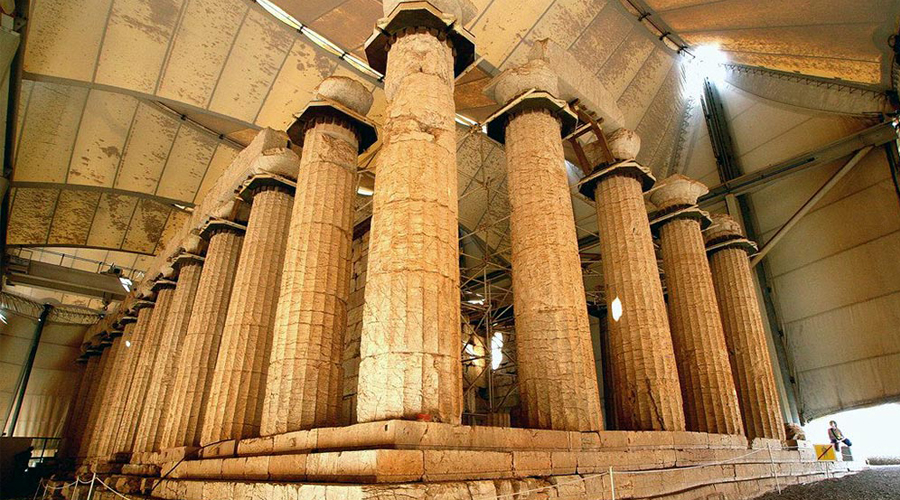Epicourios Apollo Temple
Epicourios Apollo Temple
The temple of the Epicurius Apollo is the best preserved ancient temple following the Hephaestus temple in Athens and was dedicated to Apollo Epikourios ( Apollo the helper). The monument is on UNESCO’s World Heritage List. It is one of the most extensively studied monuments because it combines a variety of characteristics both in the exterior and the interior. It is located in a rural isolated site, 15 km south of Andritsena and at 1.130 meters above sea level on mount Kotylion. In ancient times the location was named Vasses which means small, flattened areas on rocky land.
History
Pausanias praised its beauty as well as its armony and, moreover, attributed it to the architect Ictinos, Athenian architect of the Temple of Hephaestus and the Parthenon, although contemporary archaeologists have not been able to confirm it. The temple is estimated to have been built between 430 B.C. and 410 B.C. It is believed that the name Epikourios ( the one that offers assistance) was given by the inhabitants of Philagia to the temple because god Apollo had come to help them when they were threatened by plague.
The temple is considered unusual in that it has characteristics of all three of the classical styles used in ancient Greek architecture: Doric, Ionic, and Corinthian. The peristyle consists of Doric columns, Ionic columns which support the porch as well as Corinthian columns that are located in the interior of the temple. The Corinthian capital is the earliest example to have ever been found. The particularity elongated plan of the colonnade, the number of columns (6X15 instead 6X13) and their arrangement ( larger distance between columns on the short sides) is typical of the archaic temples and constitutes a direct reference to a specific temple: The temple of Apollo in Delphi. These characteristics are extremely similar to the ones found in the late classical Athenian Architecture, meaning , the finer columns, the low platform and entablature and the spacious pronaos and opisthodomus. The originality of the monument lies in the very arrangement of the interior.
The existing temple probably is not the first one to have been constructed on this particular location. It is estimated that the earliest temple of Apollo was erected, at the same site, in the late seventh century B.C. and was rebuilt at least two times in approximately 600 B.C. and 500 B.C. This belief is based on the fact that excavations from both phases survive, including a large terracota decoration as well as antefixes and votive offerings dating back in many periods.
Due to the its isolation location, the temple long remained undiscovered and therefore protected. The ruins of the ancient temple had been noticed first in November 1765 by the French architect J. Bocher by accident. In 1811-1812, during the Othoman Rule, British antiquaries removed remarkable and valuable sculptures as well as pieces of the Ionic cella frieze from the temple. These pieces remain until today at the British Museum, at the Louvre Museum and at the Munich Museum.
In 1902 – 1906 , the Greek Archaeological Society performed excavation and restoration projects at certain parts of the temple. Conservation work is currently taking place and a temporary protective “tent” has been placed above the temple in order to protect the magnificent monument from extreme weather conditions.



